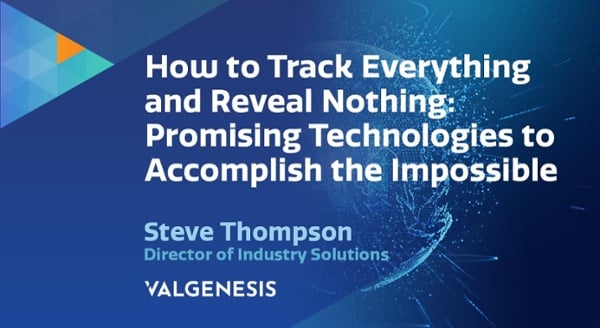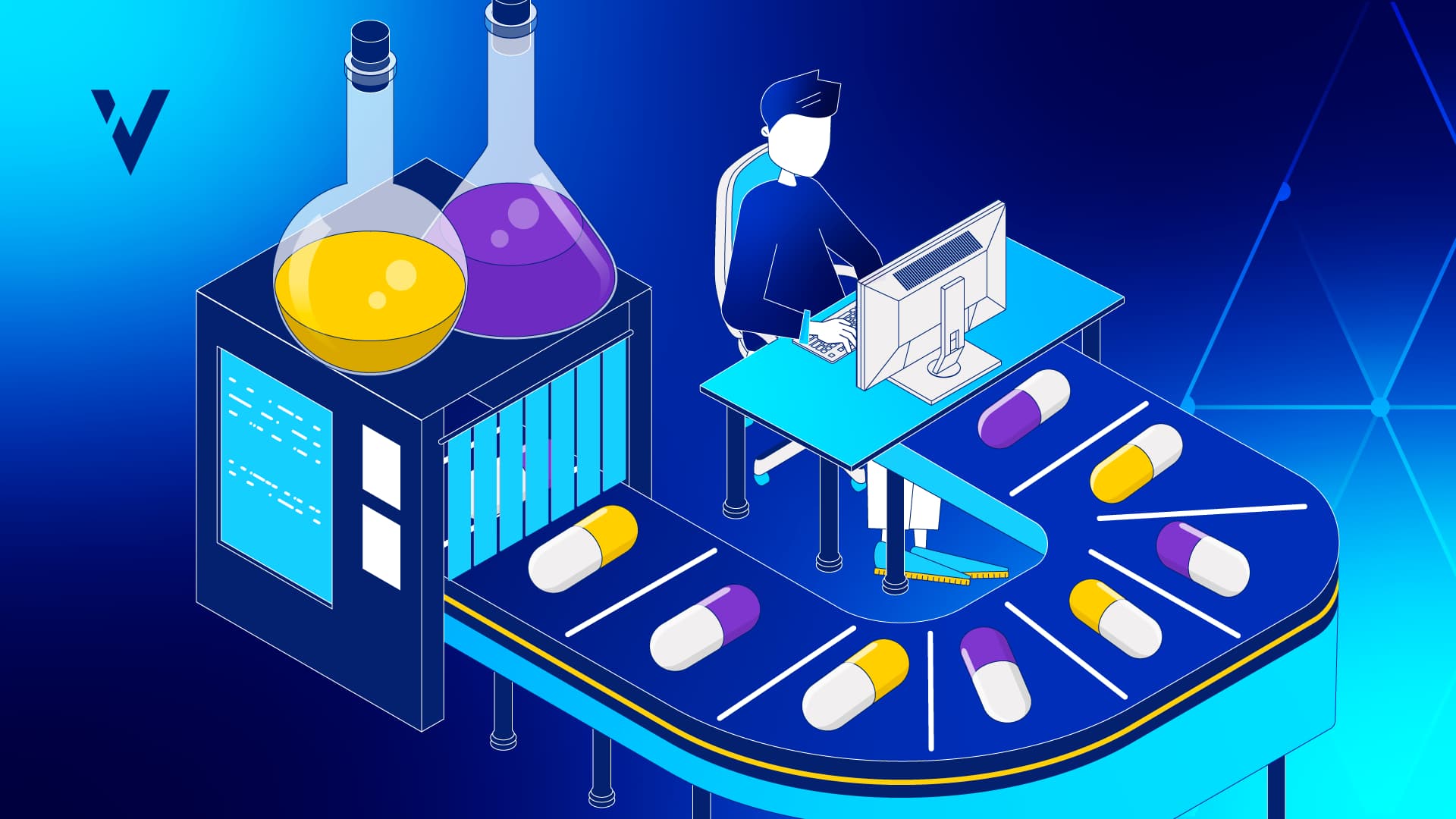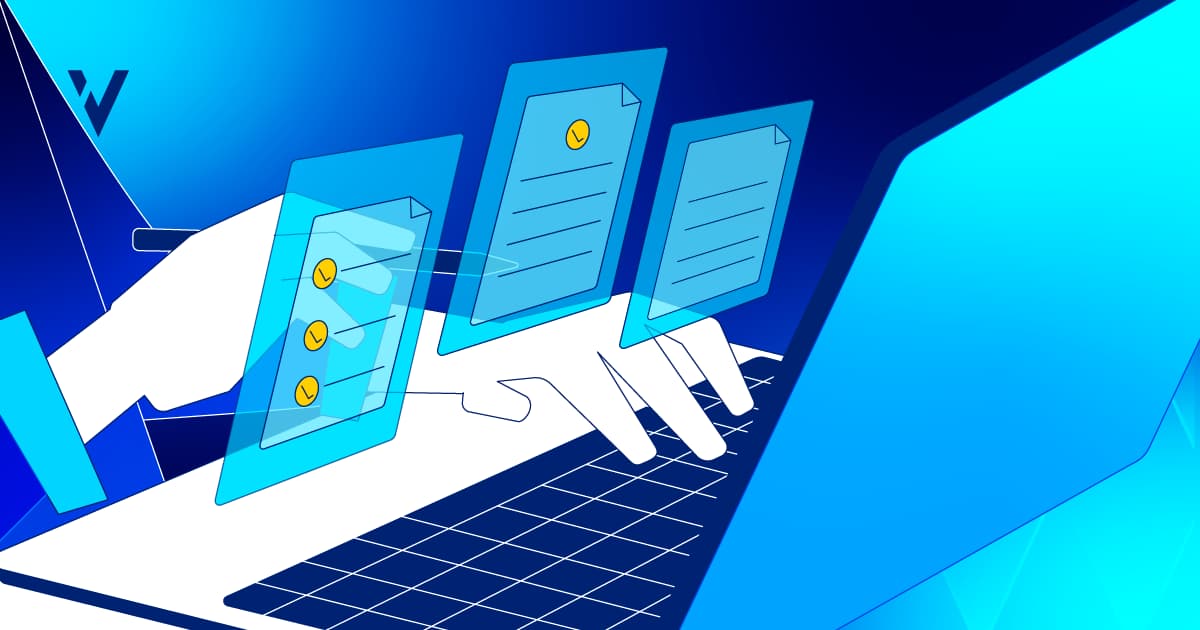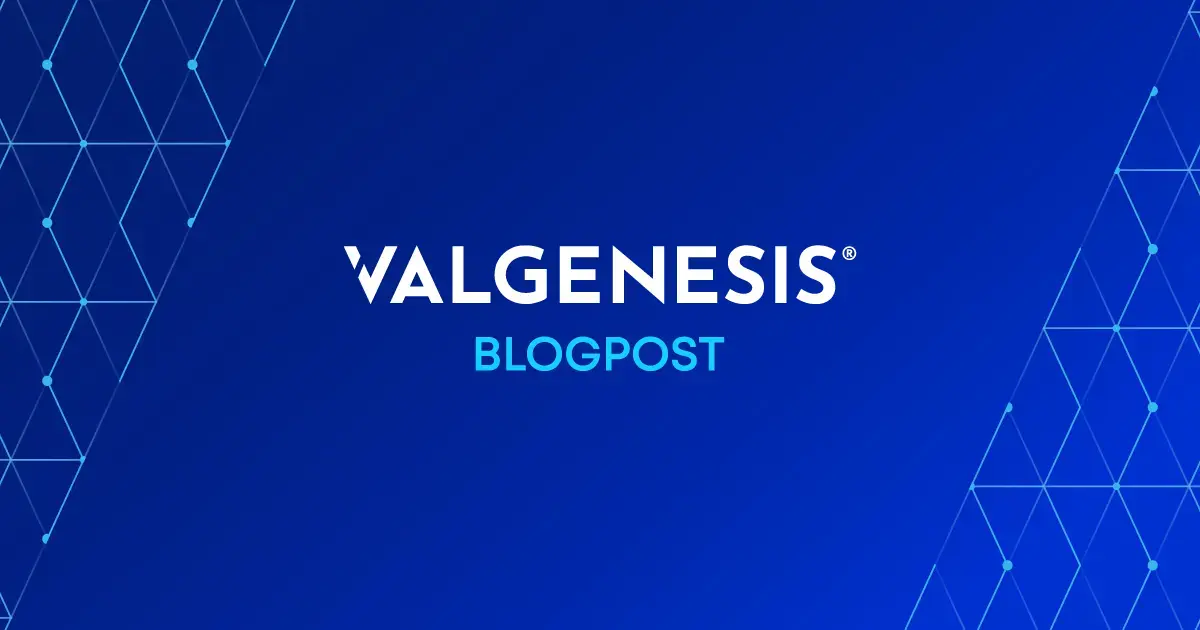Emerging technologies like blockchain, edge computing, artificial intelligence (AI), machine learning (ML), augmented reality (AR), and more are used by industries apart from life sciences to “track everything” and “reveal nothing.”
Interestingly enough, in the life sciences space, the good clinical practice (GCP) area is probably one of the first to use such technologies to share information in a manner that protects the rights, integrity, and confidentiality of trial subjects. Therefore, we can perform research on data using these technologies without exposing the identities of the people to whom that data belongs.
Steve Thompson, ValGenesis’ Director of Industry Solutions, recently presented some fascinating ideas at an Orange County Regulatory Affairs (OCRA) event we want to share with you. He talks about technologies like blockchain, AI, ML, AR, and others that have the potential to revolutionize validation methods and catalyze companies transitioning to Pharma 4.0.
Here's what Steve had to say:
Why was it important to underscore these technologies, which are not life sciences-specific, to a life sciences audience?
If the financial industry sees the value and leverages the technology to ensure our finances are accurate and secure, why can't life sciences apply the same technologies to patients? Aren't people more valuable than money?
What are your thoughts on applying blockchain technology to achieve “Data Integrity by Design,” especially in clinical trials?
First, blockchain is immutable, which is excellent for data integrity because it proves that data is original, unchanged, authentic, and verifiable. One minor change invalidates the entire chain making it easy to identify which change or corruption occurred and where. This can apply not only to validation data but also to audit trails. For clinical trials, personally identifiable and personal health information are sensitive, and blockchain controls access by allowing and revoking access. But this must be designed into the application, which is data integrity by design.
Is creating an audit trail in blockchain bulletproof?
Blockchain, by its nature, is unable to be changed. That said, nothing is really bulletproof. Everything can eventually be hacked. We have SHA 256 encryption because the prior encryption algorithms were hacked. Technology is always a "cat-and-mouse" game whereby a new technology promises more robustness because older technology can be compromised.
Can you provide an example of how edge computing could enhance pharma manufacturing?
Edge computing shows the potential to improve performance by moving computing closer to the source; in other words, the edge of the internet where the equipment, instruments, and computer systems geographically reside. Technically speaking, this reduces or eliminates latency. Also, processing can happen at the edge or near the edge with fog computing, which segregates data and processing. When properly deployed, segregation improves security and performance. Performance is about "divide and conquer," and security is about not keeping all your eggs in one basket.
Augmented reality (AR) is being used in lab and manufacturing equipment qualification processes. How does edge computing further enhance this process?
Edge computing incorporates IoT devices. These devices can be autonomous, communicating with each other and delivering intelligence and predictive behavior. This can be coupled with augmented and virtual reality by providing real-time views of sensors or other IoT devices and virtually looking around to see where operations are performing as expected, where there are potential issues, or even predicting where problems may arise. This can happen at the edge with IoT devices.
What is the connection between artificial intelligence (AI)/machine earning (ML) and blockchain technology?
How can a combination of these technologies enhance digital validation?AI is a big umbrella. ML is under that big AI umbrella. Blockchain is a protocol; a technique that can be applied. Together, ML can constantly analyze the blockchain protocol for a multitude of reasons. Think of blockchain as the ledger and ML as an intelligent resource to constantly look at all details of the ledger to understand what's happening, and if there are any issues. Couple this with digital validation and you can venture into the realm of continuous verification and validation.
How do you see life sciences companies applying these technologies today?
It appears the early adopters are in GMP for preventive maintenance and predictive analytics on manufacturing production. For GCP, the trend seems to be focused on data privacy and sharing personal health information. Another GCP area is leveraging algorithms for diagnosis, such as algorithms on psych studies to ascertain participant facial expressions and body language to determine mood. This is just one example.
How would you recommend an organization starts its journey?
Start by moving away from paper. We must start digitizing.
Is there any technology that you see on the horizon that you view as possibly equally transformative?
Nanotechnology with the ability to develop medicines that are a combination of nano microscopic robots that carry drug payloads and deliver treatment to target cells, for example. This is already being done.
As drugs and drug discovery move to a nanoscale, these microscopic robots can gather data, and, in turn, the data can be captured and analyzed. This would have to be on the edge with IoT devices, and to ensure security, privacy, and immutability, blockchain should be used.
Machine learning can monitor and maintain a constant state of validation through continuous verification. These microscopic robots must work 100%; otherwise, there could be consequences. It's necessary to ensure that new technological advancements perform as intended with acceptable risk, digitized validation, and continuous verification.
You can watch the video to learn more.




